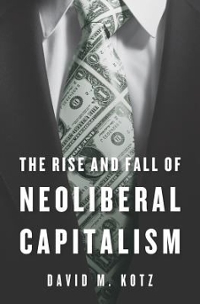Question
As film columnist Pete Hammond notes, In Hollywood, they say 'everything old is new again' and that has never been more true. . . .
As film columnist Pete Hammond notes, "In Hollywood, they say 'everything old is new again' and that has never been more true. . . . " Consider, for example, the new fiftieth anniversary digital remake of the movie The Great Escape (1963) starring Steve McQueen, Disney's animated Peter Pan (1953), and Barbra Streisand with Omar Sharif in the romantic musical Funny Girl (1968); those movies, along with hundreds of other classic films from Hollywood's past, are finding renewed popularity. The revival of these so-called "catalog titles" is no accident; because disc sales of new movies have been on a 10-year decline, Hollywood studios have been on the hunt for new revenue sources. The result is an industrywide marketing campaign for reviving classic movies or, restated in marketing terms, it's an example of "product extension, or reintroduction of old brands." Although the campaign has not solved all of the industry's disc revenue woes, it is helping. While there has been a steady decrease in sales of DVDs and Blu-ray discs over the past decade, the decline has been much smaller for classic film titles. Sales of catalog titles continue to grow. They accounted for nearly 45 percent of the industry's 2012 film disc (DVD and Blu-ray) revenues. Overall, then, sales of catalog titles, rather
than new releases, are providing an increasing share of total disc revenues.
A core demographic for the revival is older movie fans who remember and rewatch catalog titles, including many who want upgraded Blu-ray remakes of classic films such as the memorable Rebel Without a Cause (1955) with James Dean. These Blu-ray releases are especially important because they generate higher profit margins than standard DVDs. Younger viewers tend toward less-expensive rentals of current movies from Netflix and similar sources and view those rentals in digital formats, including online streaming and video on demand via cable and Internet. Growth in these less expensive options is a main reason for the industry's declining DVD sales. However, it is estimated that 80 percent of catalog-title disc purchases are made by price-conscious impulse shoppers, including younger viewers, at mass-market retail stores, such as Target and Walmart. Thus, two contrasting groups of buyers have emerged: (1) older viewers buying Blu-ray and other kinds of upgraded discs and (2) buyers, both younger and older, seeking very low-priced DVDs. Accordingly, large retail stores are placing bins in the aisles packed with inexpensively packaged DVDs priced as low as $5 for Hook, Home Alone 2, Secondhand Lions, and other catalog titles.
Along with Blu-ray upgrades, the marketing campaign includes increased retailer display space for classic films, eyecatching online marketing images, and newer packaging to entice the classic audience. Distributors are packaging thematic boxed sets of multiple discs, some with films starring a particular actor, such as Tom Hanks, and others grouping together one type of film, such as famous musicals. Prominent firms Warner Bros. and the Paramount Pictures Library (Viacom Inc.), for example, are collaborating in combining related movies from different studios together in one package, including several John Travolta thrillers. Similarly, MGM in 2012 promoted Bond 50: The Complete 22 Film Collection, the fiftieth anniversary Blu-ray collection. These marketing efforts are having a visible public impact; Blu-ray discs of Jaws, and the Bond 50 Collection broke onto Rentrak Corp.'s top-10 list of bestsellers in 2012. The trend to revive classic films is moving internationally, too, with India's online retailers, Flipkart and Moviemart.com, experiencing an increased number of customers and more DVD sales of old and classic movies than new films. Domestically, reaching beyond DVDs and Blu-ray, Warner Bros. has launched a subscription streaming service for classic TV shows and movies. In addition to films and TV, the impact of the classic-movie trend appears to be stretching into seemingly unrelated industries; PureCostumes.com, purveyor of Halloween costumes, carries licensed costumes of such classic movies as Breakfast at Tiffany's and Grease. Who knowsperhaps the industry's marketing campaign, itself, may someday become known as a classic.
1.Describe the advertising mix being used in Hollywood's new marketing campaign for classic movies.
2.What are the main reasons for the new campaign? How do you recommend they measure results?
3.Where do DVD and Blu-ray discs fit in the product life cycle? How does this influence the marketing mix?
4.Who is the target market for Warner Bros. with their new subscription streaming service for classic TV shows and
movies? What challenges do you expect that they will face?
Step by Step Solution
There are 3 Steps involved in it
Step: 1

Get Instant Access to Expert-Tailored Solutions
See step-by-step solutions with expert insights and AI powered tools for academic success
Step: 2

Step: 3

Ace Your Homework with AI
Get the answers you need in no time with our AI-driven, step-by-step assistance
Get Started


